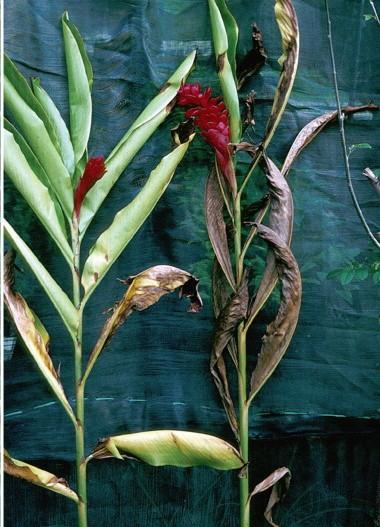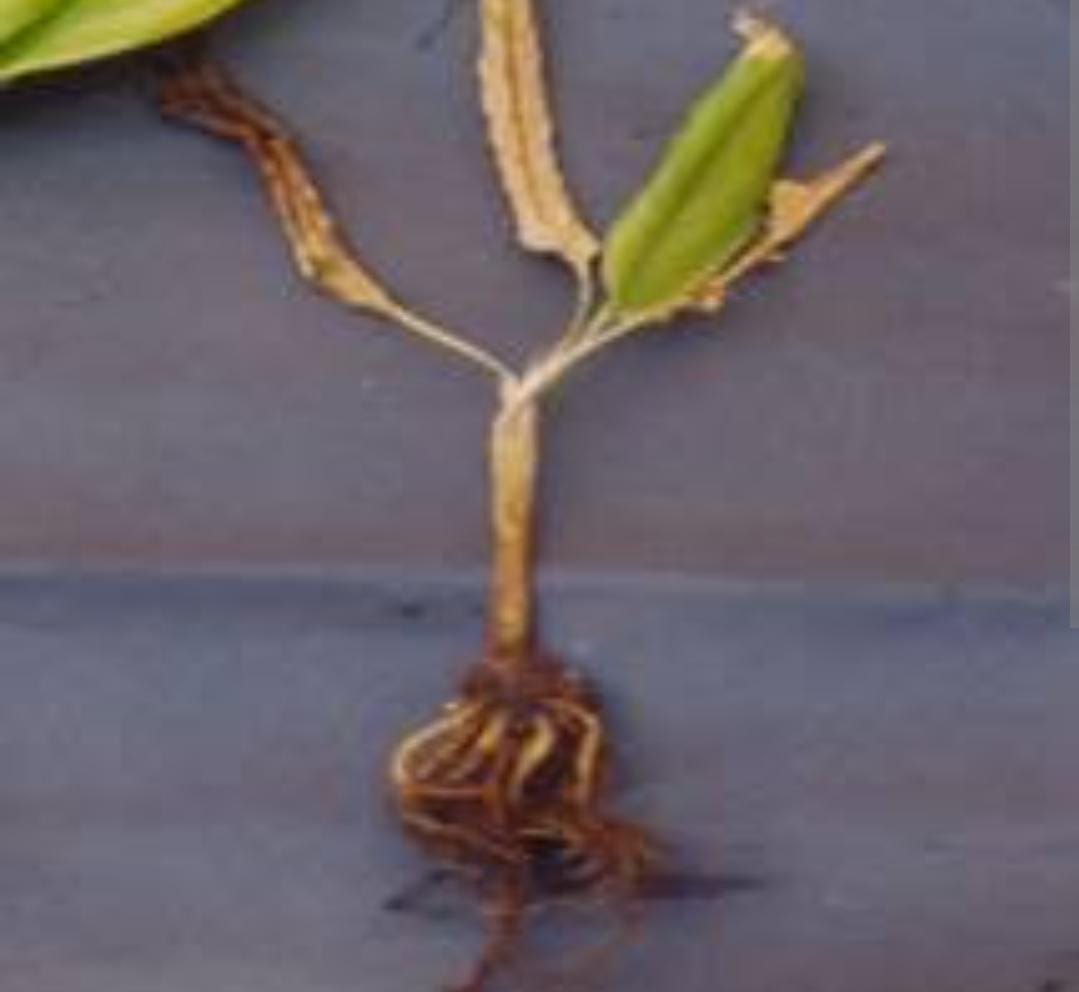Alpinia Plant
Alpinia, also known as Red Ginger, is an ornamental plant with attractive foliage and fragrant flowers. Plant in well-draining soil with partial to full shade. Keep the soil consistently moist, and provide occasional fertilization for optimal growth and flowering.
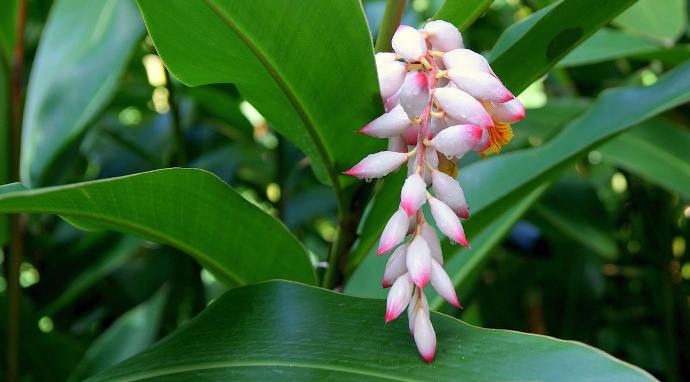
Habit
Perennial
Height
Varies
Growth
Fast
Soil
Well Drained, Loamy
Shade
Partial shade to Full Sun
Moisture
Moist
Edible
Yes
Medicinal
Yes
Origin
Southeast Asia
Climatic Condition
Tropical Humid
Temperature (°)
20-30
Humidity (%)
60-80
Potting media
Peat+Perlite
Fertilizers
Balanced NPK(10:10:10)
Watering
Regular, Keep Moist
Plant Weight
300-500 g
Flowering Time
Summer to Fall
Soil Ph level
6.0-7.0
Water Ph level
6.0-7.5
Soil EC
1-2 dS/m
Yield Per Plant
Ornamental
NPK ratio
10:10:10
life Span
5-10 yrs
Health Benefits
Anti-inflammatory
Suggested Grow Media or Potting Mix ?
40% loam, 30% compost, 30% sand
Suggested Fertigation/Fertilizers
Fertilize every 3 weeks with a balanced fertilizer.
Common Diseases and Remedies
Leaf spot , rhizome rot.
Spotted leaves , wilting , decay.
Neem oil, enhance soil health with compost.
HEALTH BENEFITS
Alpinia, also known as "galangal," is a type of plant related to ginger and is used in traditional medicine for its various health benefits. Some of its potential benefits include:
- Anti-inflammatory properties: Alpinia has compounds that may help reduce inflammation in the body, which can be beneficial for conditions like arthritis or general pain.
- Digestive health: Similar to ginger, Alpinia can aid digestion by soothing the stomach and promoting better digestion. It may help with nausea, indigestion, or bloating.
- Antioxidant effects: Alpinia contains antioxidants that help combat free radicals, potentially reducing oxidative stress and supporting overall cellular health.
- Antimicrobial effects: Some studies suggest that Alpinia has antibacterial and antifungal properties, which could help protect against infections.
- Respiratory health: The plant is sometimes used in traditional medicine to treat respiratory issues like coughs, colds, or bronchitis due to its expectorant properties.
- Pain relief: Alpinia may also be used for its analgesic effects, helping to relieve pain in conditions like headaches or muscle aches.
It’s important to note that while Alpinia has many potential benefits, further research is needed to confirm these effects, especially in humans. Always consult with a healthcare professional before using it for medicinal purposes.
What Is An Alpinia Plant ?
Galangal (Alpinia) is a genus of flowering plants in the family Zingiberaceae, known for species such as Alpinia galanga and Alpinia officinarum. These plants are grown for their rhizomes and are used for many food and medicinal purposes. If you have specific questions about growing, using, or anything else about galangal, please feel free to ask. Galangal is not a specific crop but a genus of plants that includes several species such as galangal (Alpinia galanga) and galangal (Alpinia officinarum). These plants are grown for their rhizomes and are used in cooking and herbal medicine.
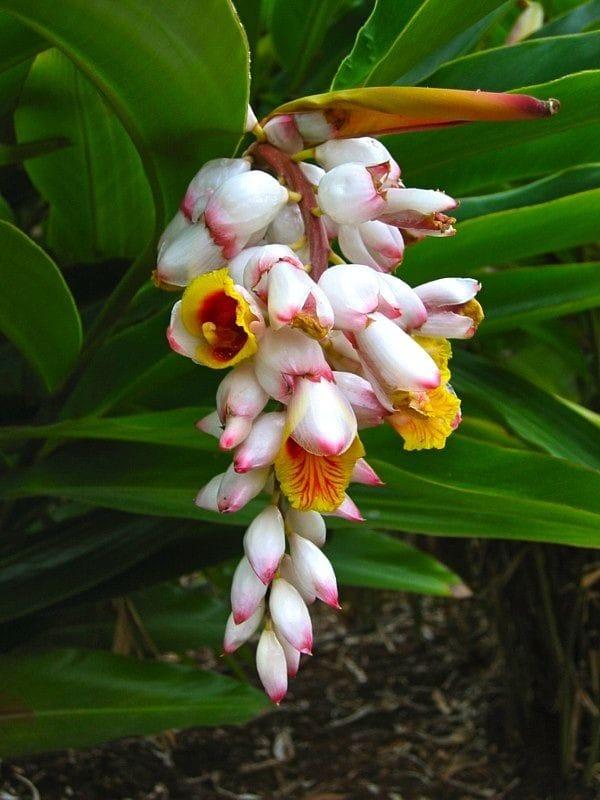
What Are The Different Types Of Alpinia Plants?
1. Southern Ginger (Southern Ginger)
Used in Southeast Asian cuisine and known for its aromatic rhizomes.
2. Ginger (Small Galangal)
Similar to galangal, it is used in medicine and cooking.
3. Alpinia purpurata (Red Ginger)
It is used for ornamental purposes due to its bright red flower clusters.
4. Alpinia zerumbet (shell ginger)
Known for its large, green leaves and shell-shaped flowers, it is often grown as an ornamental plant.
5. Alpinia nutans (dwarf cardamom)
It is grown small for its aromatic seeds.
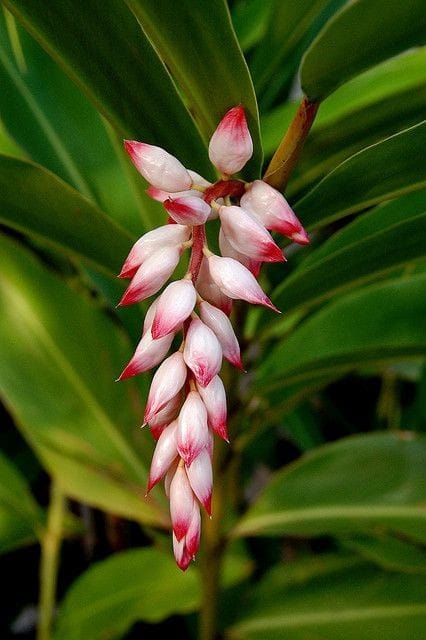
How to care for Alpinia Plant ?
1. Location
Alpinia plants prefer warm, moist and well-drained soil. They can be grown in containers or in the ground and require watering and fertilizing throughout the growing season. They prefer partial shade to full sun. They can tolerate some direct sunlight, especially in the morning, but should be protected from strong afternoon sun.
2. Sunshine
Alpinia plants prefer partial shade to full sun. They can tolerate some direct sunlight, especially in the morning, but should be protected from strong afternoon sun.
3. Soil
Alpine ginger plants prefer well-drained soils rich in organic matter. If your soil is too heavy or compacted, you can add some compost or peat moss to improve drainage.
4. Hydration
Galangal plant likes normal soil but does not like waterlogging. Water alpine plants regularly, especially during the dry season. Place water around the base of the plant to prevent the leaves from getting wet, which can cause fungal diseases.
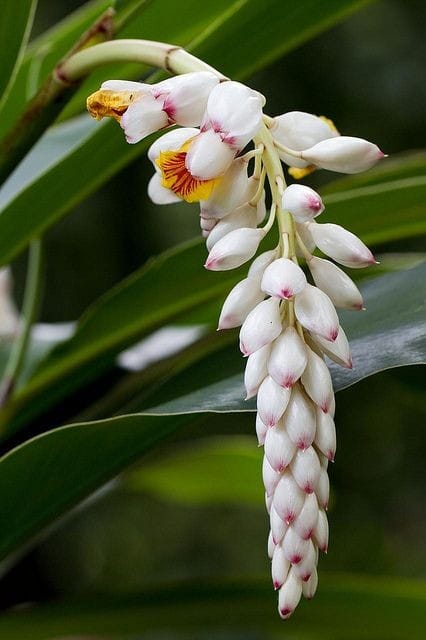
5. Nourishment
Galangal plants do not need a lot of fertilizer, but a balanced fertilizer (such as 10-10-10) can be given once or twice during the growing season. Follow the manufacturer's instructions for application.
6. Issues
Alpinia plants are easy to grow, but like plants they are subject to a variety of problems. Here are some of the problems you may encounter when growing alpine ginger plants and how to solve them: If your alpine ginger plants do not receive adequate nutrients, they will develop yellow leaves or delayed growth. To solve this problem, you can use a balanced fertilizer (such as 10-10-10) according to the manufacturer's instructions. Alpinia plants are sensitive to heat, drought and excessive humidity. To protect your plants from environmental stress, make sure they have access to partial shade, are watered regularly, and are protected from strong afternoon sun.
What are the Benefits of Alpinia ?
Alpinia plants have a wide range of ornamental values as well as food and medicinal uses: Alpinia plants are known for their attractive, pink leaves, making them popular ornamental plants in tropical countries. They can be grown in containers or in the ground and require watering and fertilizing throughout the growing season. Some Alpinia species, such as Alpinia zerumbet, are used in traditional medicine. The rhizome and leaves of ginger are used to treat many ailments, including digestive problems, headaches, and inflammation. Galangal plant flowers attract bees and other pollinators, which can help improve pollination in the garden. Alpinia plants are perennial, meaning they reappear every year. This makes them a more durable and long-lasting addition to your garden. Overall, the Alpinia plant is a versatile and attractive plant that can be grown for its aesthetic value, culinary use or medicinal properties. They are also easy to grow and can make a great addition to a tropical garden or houseplant.
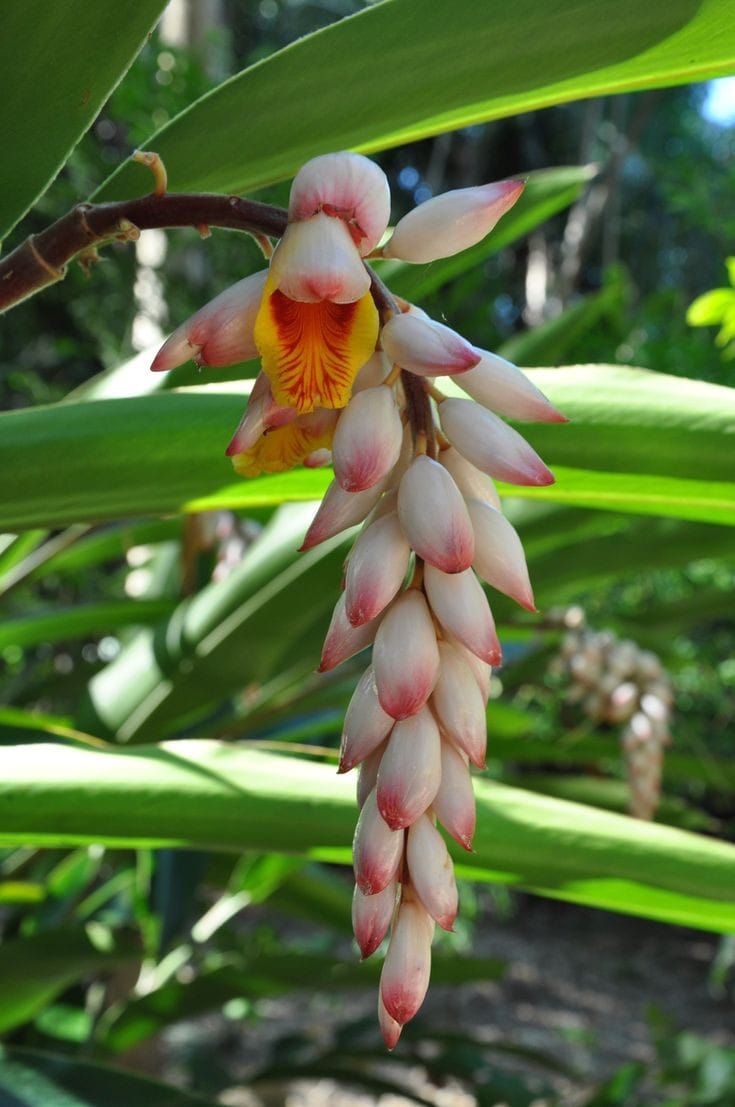
FAQs About Growing Alpinia
1. How to care for Alpinia crop ?
Alpinia plants involves several important steps to keep them healthy and productive: Alpinia plants prefer partial shade to full sun. They can tolerate some direct sunlight, especially in the morning, but should be protected from strong afternoon sun. Water your alpine ginger plants regularly, especially during dry periods. They like normal soil but do not like waterlogging. Place water around the base of the plant to prevent the leaves from getting wet, which can cause fungal diseases. Follow the manufacturer's instructions for application. Mulch around alpine plants with straw or sawdust to help retain moisture and reduce weeds. Remove any dead or yellow leaves as well as any flowers or seed pods. This will help improve air circulation and reduce the risk of disease. By following these care tips, you can help your mountain ginger plant thrive and produce abundant crops
2. what are the uses of Alpinia crop?
Alpinia plants are known for their attractive, pink leaves, making them popular ornamental plants in tropical countries. They can be grown in containers or in the ground and require watering and fertilizing throughout the growing season. Rhizomes of some Alpinia plants, such as galangal, are used as spices in cooking. Galangal has a spicy, peppery taste and is often used in Thai, Indonesian and Malaysian cuisine. Some Alpinia species, such as Alpinia zerumbet, are used in traditional medicine. The rhizome and leaves of ginger are used to treat many ailments, including digestive problems, headaches, and inflammation. Galangal plant flowers attract bees and other pollinators, which can help improve pollination in the garden. Alpinia plants are perennial, meaning they reappear every year. This makes them a more durable and long-lasting addition to your garden.
3. Can I grow Alpinia crop indoor ?
Yes, you can grow Alpine ginger plants indoors
4. Which Pot is best for Alpinia crop ?
When choosing a pot to grow alpine ginger plants indoors, consider the following: Choose a pot that is at least 6 inches deep and 12 inches in diameter. This will provide enough room for the plant to grow and expand. Make sure the pot has a well to prevent water from rotting the roots. You can add a layer of stones or broken pottery to the pelvic floor to improve drainage. Pots made of plastic, ceramic or terracotta are suitable for growing alpine ginger plants indoors. Plastic pots are lightweight and easy to transport, while ceramic and terracotta pots are more attractive. In general, the best pot for growing Alpine ginger plants indoors is one that is large, has good drainage, and is made of materials that suit your needs, safety, and beauty.
5. Where I can buy Alpinia crop ?
Many local nurseries and garden centres grow mountain ginger plants, especially during the spring and summer months. There are many online retailers that sell alpinia plants, including Amazon, Etsy, and specialty nurseries. Some seed companies also sell mountain ginger seeds that you can grow into plants. Some farmers markets have vendors selling mountain ginger plants or seeds.

